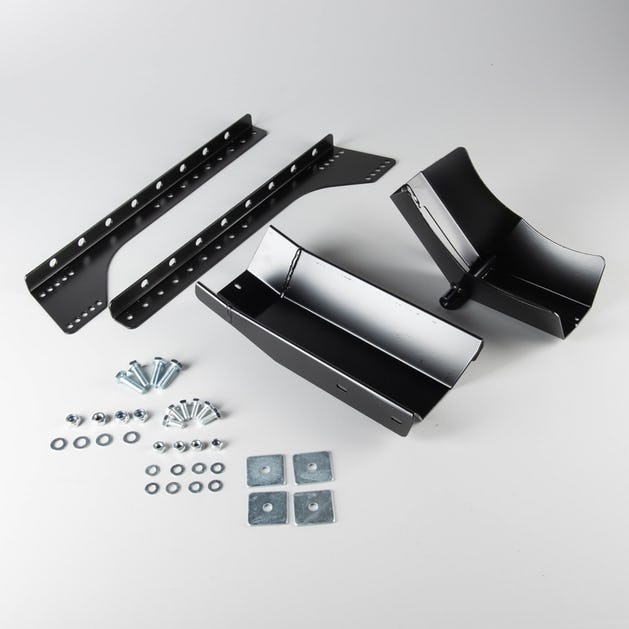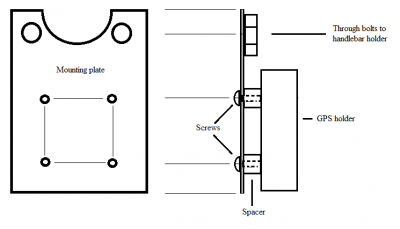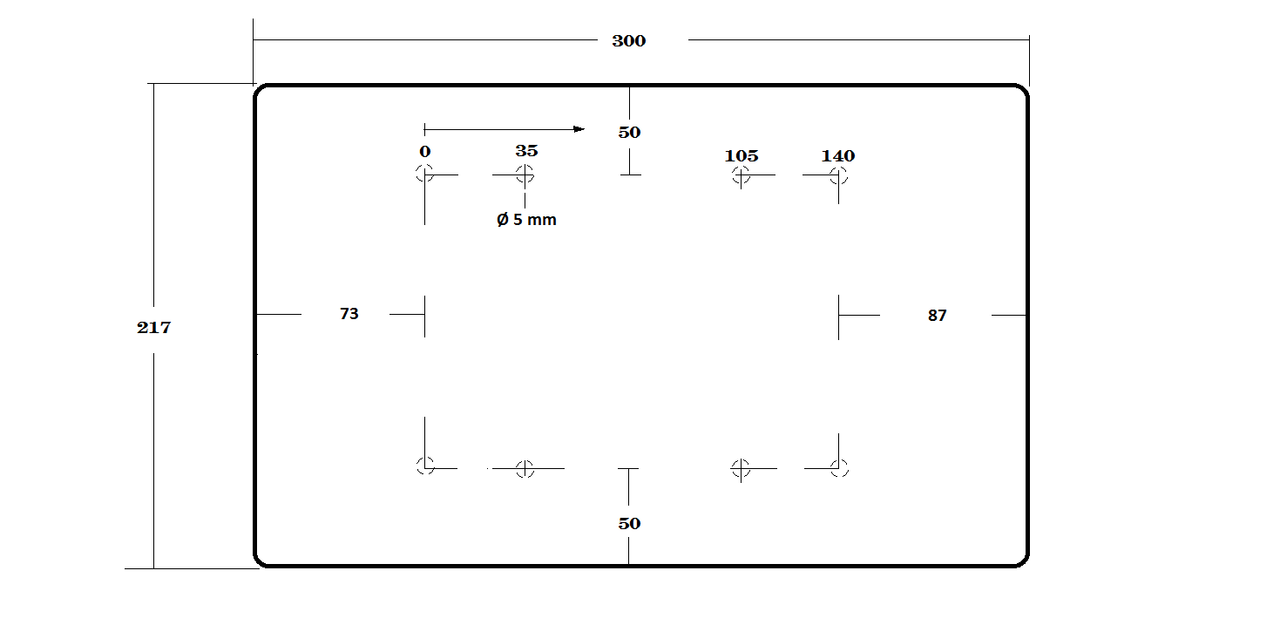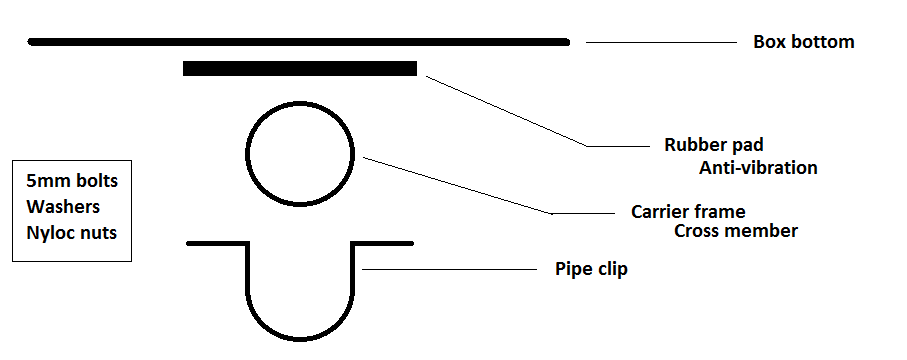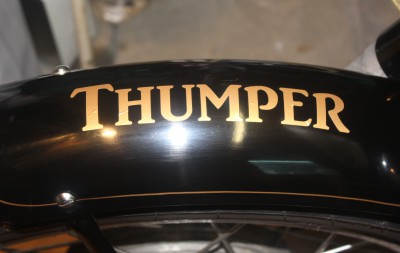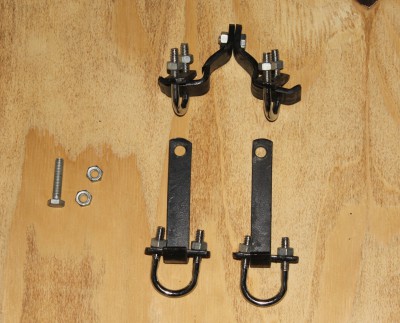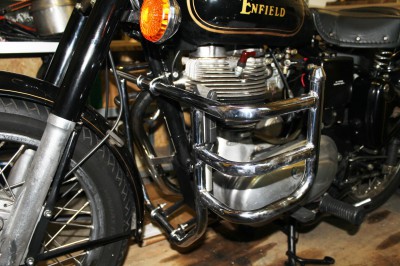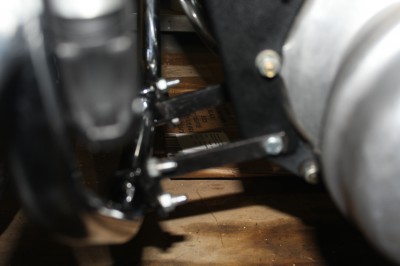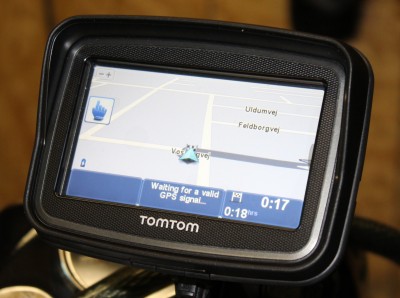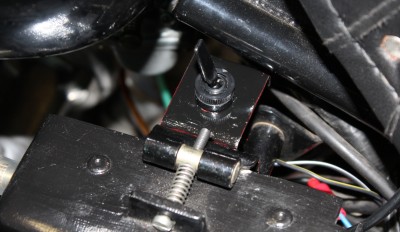Thumper lives in my shed. It isn’t the worlds largest shed and I need to stand at the bench to get anything done. It has always been a bit of a squeeze with Thumper up on his centre stand. Even when I put his front wheel up against the wall I lose a foot and a half of space when I pull him up onto the stand. I decided something had to be done.
Normally, I reverse him onto the shed. I thought that if I had some way of parking him with the front wheel right up against the wall then the problem would be solved. A transport stand fixed to the wall might be a solution. The internet is my friend so I went off to investigate. I found one and ordered it. Cheap, cheerful and Chinese it may be, but it is a solid piece of kit. Some assembly required, as can be seen here:
I found one of the pillars that support the wall of the shed. Not easy, because the shed is insulated, and screwed the now assembled transport stand to it. I decided it wasn’t going to be stable enough with just the one small screw so I drilled through the front end of the “shoe” and set another, heavier, screw to secure the thing. Then I pushed Thumper forward into the stand. He went in with no problem and a satisfying mechanical clank as the shoe fell into place holding the front wheel. The stand is adjustable according to wheel size but luckily I had guessed right and no further fettling was required.So there he was, up against the wall and I had the space I required behind him to use as I please.
Although he is held in place by this thing I decided it wasn’t particularly stable with respect to sideways movement. He was in danger of tipping. One usually uses straps in conjuction with these stands. Now I understood why.
I don’t have anywhere to fix straps. My solution was to construct a stand offering support beneath the crash bars. I measured up and found some solid timber in my stache. An hours work and the job was done. Here’s the result:
So there it is. Thumper is nicely parked up against the wall and I have gained 18 inches of work room at the other end. I wasn’t so much worried about him tipping as I don’t usually touch him when he’s parked but accidents will happen and my Grandson is often in the shed with me. I could hold Thumper if he falls, but a youngster wouldn’t have a chance. A biproduct of the whole exercise is, that I now have an alternative stand to use if I so need it, because my constructed stand could be used anywhere.
Now that’s flexible design for you…


